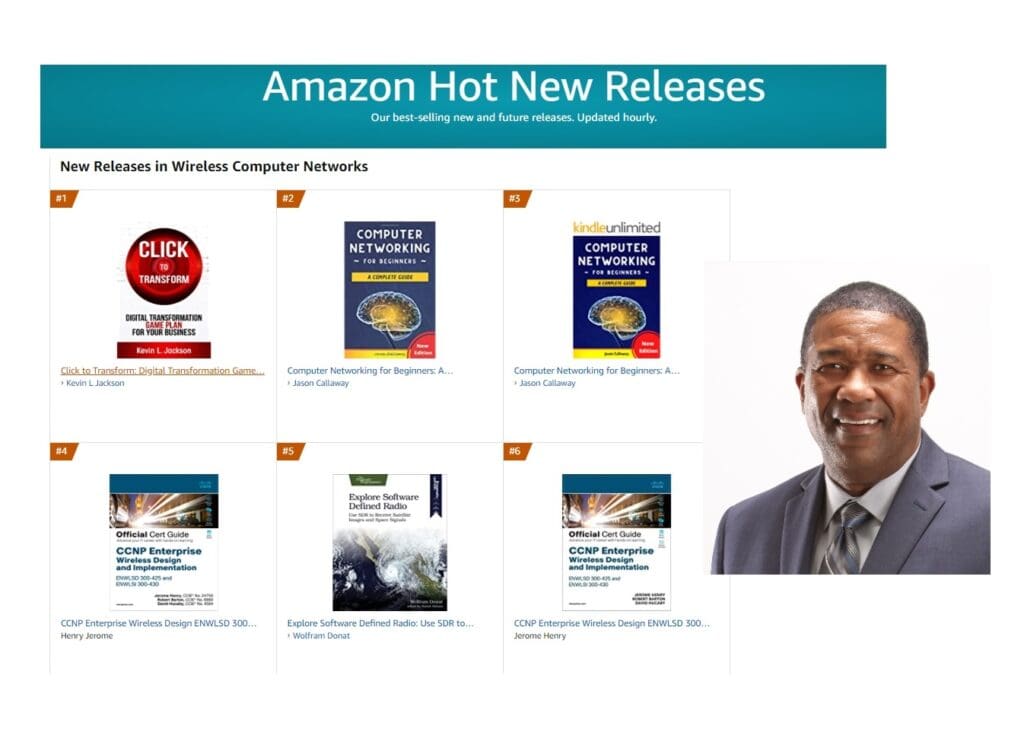Twitter Feed
2018 AT&T Business Summit: Security “in” and “of” the Cloud
While public cloud is undoubtedly an outsized piece of the conversation, news headlines of the latest data breach can make this move a very frightening proposition. The question of how…
My Brush with Royalty: Queen Latifah
Queen Latifah! Hip Hop Icon. Movie Star. Television Star. Fashion Model. Songwriter. Producer. Entrepreneurial Genius!? YES! Dana Elaine Owens, her given name, is co-owner of Flavor Unit Entertainment, a firm that includes…
What’s New in Puppet 5?
Puppet 5 is released and comes with several exciting enhancements and features that promise to make configuration management much more streamlined. This article will take a comprehensive look at these…
5 Reasons Why Ansible is the Best CM Tool Out There?
Amidst volatile markets, dynamic technology shifts, and ever-increasing customer demands, it is imperative for IT organizations to develop flexible, scalable and high-quality applications that exceed expectations and enhance productivity. A…
Machine learning APIs for Google Cloud Platform
Google Cloud Platform (GCP) is considered to be one of the Big 3 cloud platforms among Microsoft Azure and AWS. GCP is widely used cloud solutions supporting AI capabilities to design and…
What Is The Most Important Part of Architecture?
I always find it interesting to hear what people view architecture as. A lot of people think it’s just about the design aspect, where you get to put pen to…
Cloud migration best practice Part 4: Executing the migration
This series has stepped through cloud migration best practices. After providing an overview, we discussed: Classifying business-critical data. Updating organizational IT governance policies. Application screening and cloud workload selection. How to…
Cloud Migration Best Practice Part 3: Application Portfolio Analysis
In part three of this series on cloud migration best practice, I will focus on migrating the application itself. If you haven’t had the opportunity to read our recommendations from part…
Why Use Immutable Storage?
Data has become a global currency, and its value has nowhere to go but up. According to The Economist online, the world’s most valuable resource is no longer oil, but…
CLOUD ACT: What Does That Mean for Your Cloud Storage
When Congress names a law after you, it’s getting serious. That is where we are now with cloud computing. The Clarifying Lawful Overseas Use of Data Act or CLOUD Act (H.R. 4943) is…

From a business perspective, differentiating business processes and quality customer service are central to overall success.
Business leaders must therefore clearly identify and measure how information technology contributes to the value of every key business process.
They must also know how to most cost effectively use IT when the task is merely the management of commodity operations.
Just focusing on infrastructure improvements may result in cost rationalization, but it can also obscure the impact and value of applications and business processes to the end customer.
Quality of service is always an essential ingredient in evaluating the business effectiveness—the elements of which are infrastructure, resources, activities, and services that span the entire business lifecycle.
Business leaders must embrace digital transformation because the right blend of cloud, managed services, and traditional privately run data centers will deliver the following:
- an ability to leverage economies of scale across the service ecosystem created by using multiple cloud service providers;
- an understanding of business value that expands the traditional financial values of the total cost of ownership (TCO) and return on investment (ROI) by including customer value, seller provider value, broker value, market brand value, corporate value, and the technical value of any investment;
- a wider view of technology’s impact on a business through the acceptance of a business as a portfolio of business processes that demand the use of portfolio management techniques;
- an understanding of why business processes and their associated IT investments should be classified as differentiating based on IT, differentiating not based on IT, or not differentiating at all.
When viewed from this lens, digital transformation delivers business and mission value by doing these:
- accelerating speed to market,
- strengthening competitive positioning,
- boosting revenue growth,
- raising employee productivity, and
- expanding the ability to acquire, engage, and retain customers.
Success, however, requires these:
- envisioning transformation as an economic and business process improvement revolution, not a technical one;
- relying on metric-driven goals and plans which are explicitly driven by the organization’s goals;
- ensuring organizational goals are compatible with cloud business enablers; and
- ensuring enablers support the overall business strategy and align with the available economic options for consuming cloud services.
Interested in reading more about digital transformation and the tools required for success? Pre-order my book, Click to Transform, coming this Saturday!
Article generated by AI in cooperation with Leaders Press based on “Click to Transform”

Cloud Computing
- CPUcoin Expands CPU/GPU Power Sharing with Cudo Ventures Enterprise Network Partnership
- CPUcoin Expands CPU/GPU Power Sharing with Cudo Ventures Enterprise Network Partnership
- Route1 Announces Q2 2019 Financial Results
- CPUcoin Expands CPU/GPU Power Sharing with Cudo Ventures Enterprise Network Partnership
- ChannelAdvisor to Present at the D.A. Davidson 18th Annual Technology Conference
Cybersecurity
- Route1 Announces Q2 2019 Financial Results
- FIRST US BANCSHARES, INC. DECLARES CASH DIVIDEND
- Business Continuity Management Planning Solution Market is Expected to Grow ~ US$ 1.6 Bn by the end of 2029 - PMR
- Atos delivers Quantum-Learning-as-a-Service to Xofia to enable artificial intelligence solutions
- New Ares IoT Botnet discovered on Android OS based Set-Top Boxes


